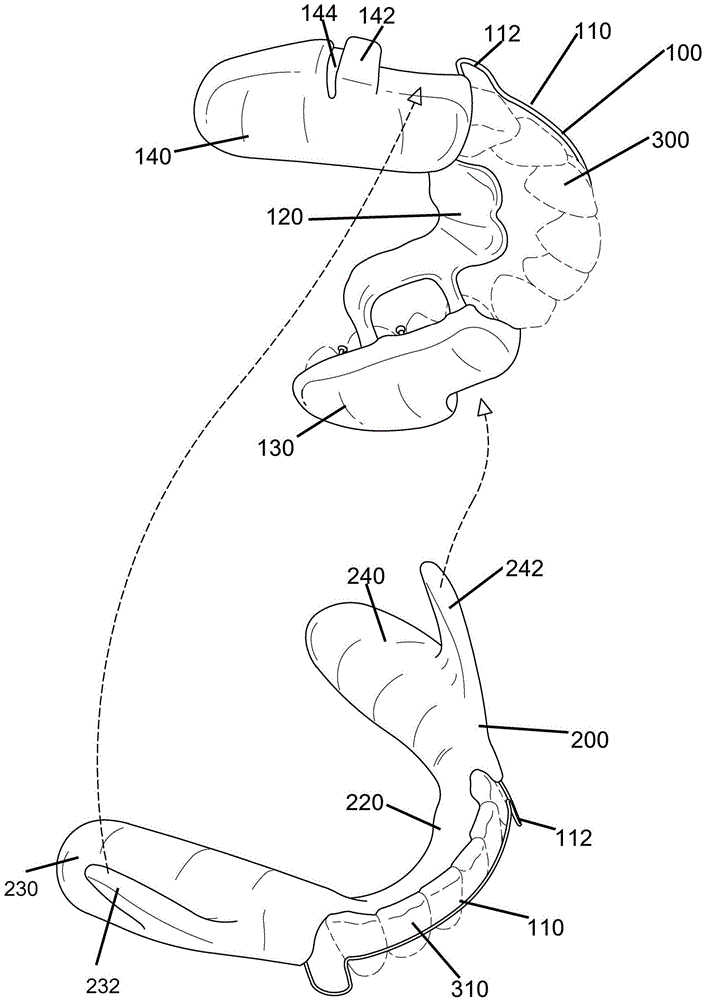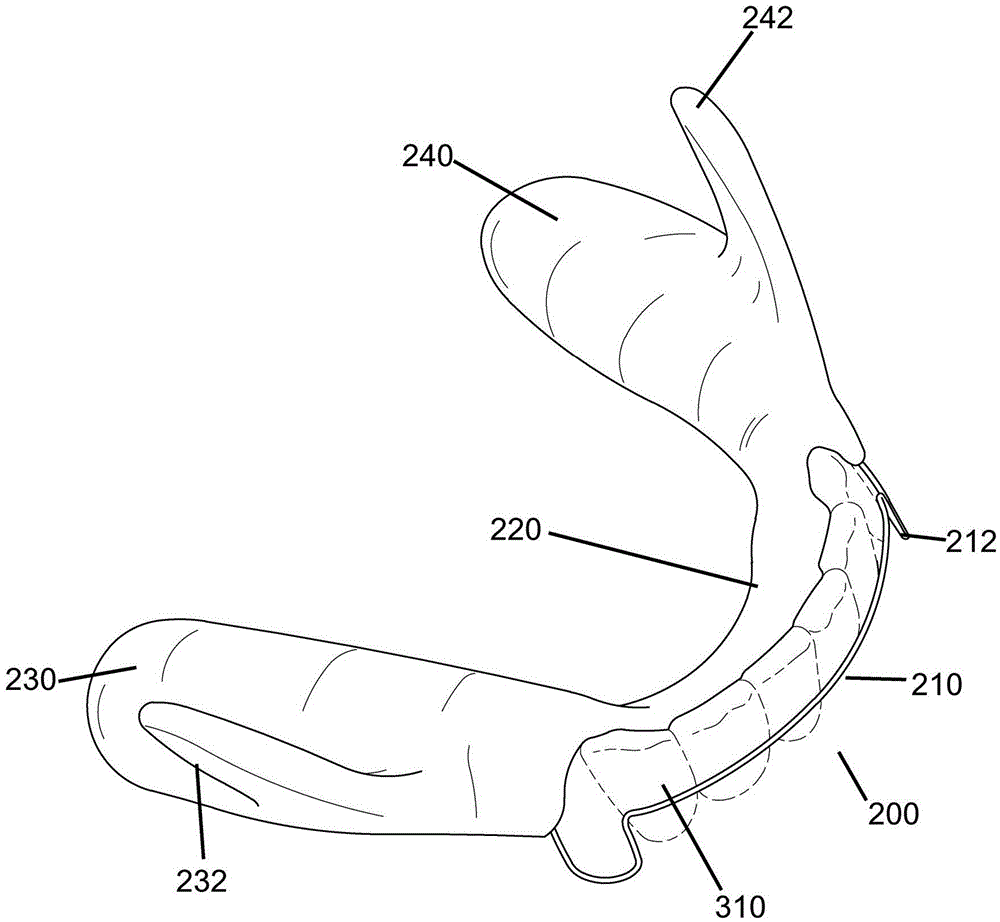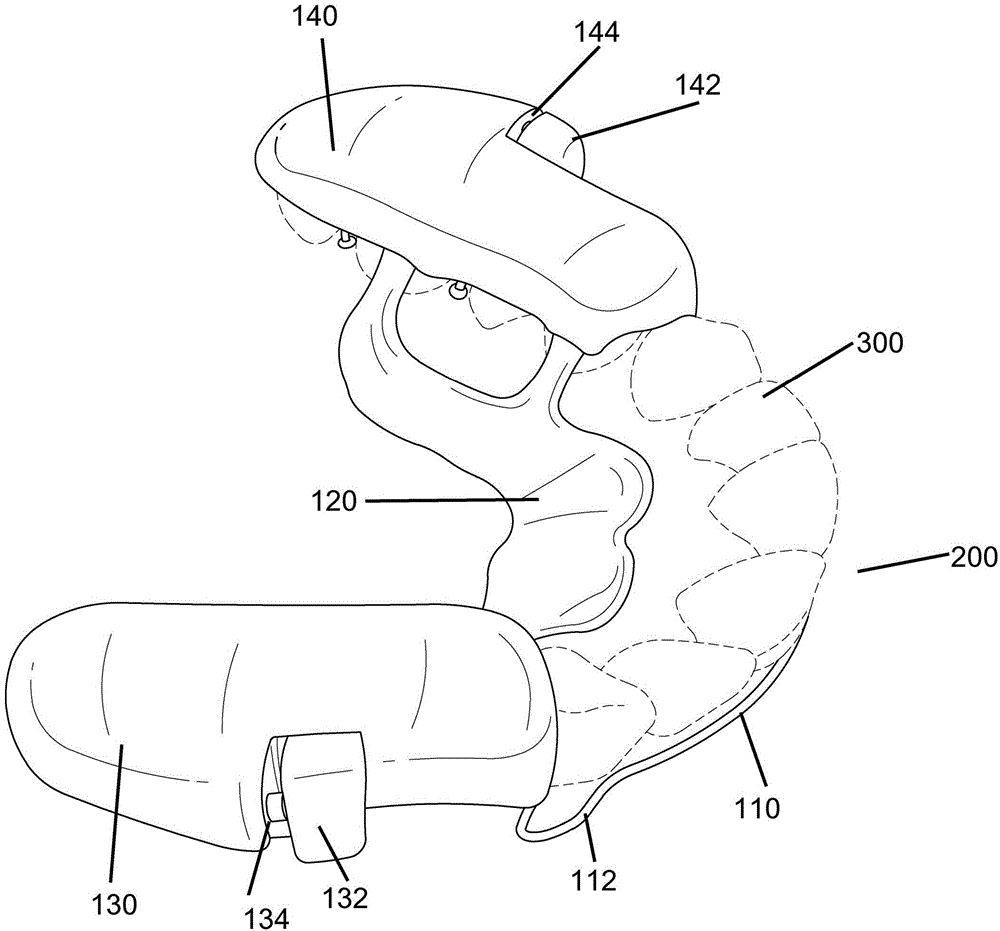Oral appliance for treating obstructive sleep apnea (OSA) and sleep bruxism
A technology of orthodontics and oral cavity, applied in the direction of snoring prevention appliances, other nursing equipment, etc., can solve the problems of reducing effectiveness, not being able to treat sleep bruxism, discomfort, etc.
- Summary
- Abstract
- Description
- Claims
- Application Information
AI Technical Summary
Problems solved by technology
Method used
Image
Examples
Embodiment Construction
[0029] Disclosed herein is a device for treating sleep apnea and methods of use thereof having top and bottom trays. Each tray is adapted to hold the upper and lower teeth respectively, and the bottom tray has two flanges extending upwardly from the generally flat side of the bottom tray opposite the side to which the teeth are attached. This way the flange extends to the top tray when worn. Top trays have corresponding flat areas on each side that cut into the outside (relative to the teeth) plane of the tray. Thus, the flange abuts against a flat area on the outside of such an upper tray, pushing the lower tray forward, thereby pushing the lower teeth and tongue forward. The user can wear the braces while sleeping, thereby avoiding airway obstruction caused by the tongue. Liners that cover the teeth provide a different occlusal surface than normal occlusion. This can be used to treat sleep bruxism at the same time as treating OSA. The opposing surfaces provide a stable, ...
PUM
 Login to View More
Login to View More Abstract
Description
Claims
Application Information
 Login to View More
Login to View More - R&D
- Intellectual Property
- Life Sciences
- Materials
- Tech Scout
- Unparalleled Data Quality
- Higher Quality Content
- 60% Fewer Hallucinations
Browse by: Latest US Patents, China's latest patents, Technical Efficacy Thesaurus, Application Domain, Technology Topic, Popular Technical Reports.
© 2025 PatSnap. All rights reserved.Legal|Privacy policy|Modern Slavery Act Transparency Statement|Sitemap|About US| Contact US: help@patsnap.com



